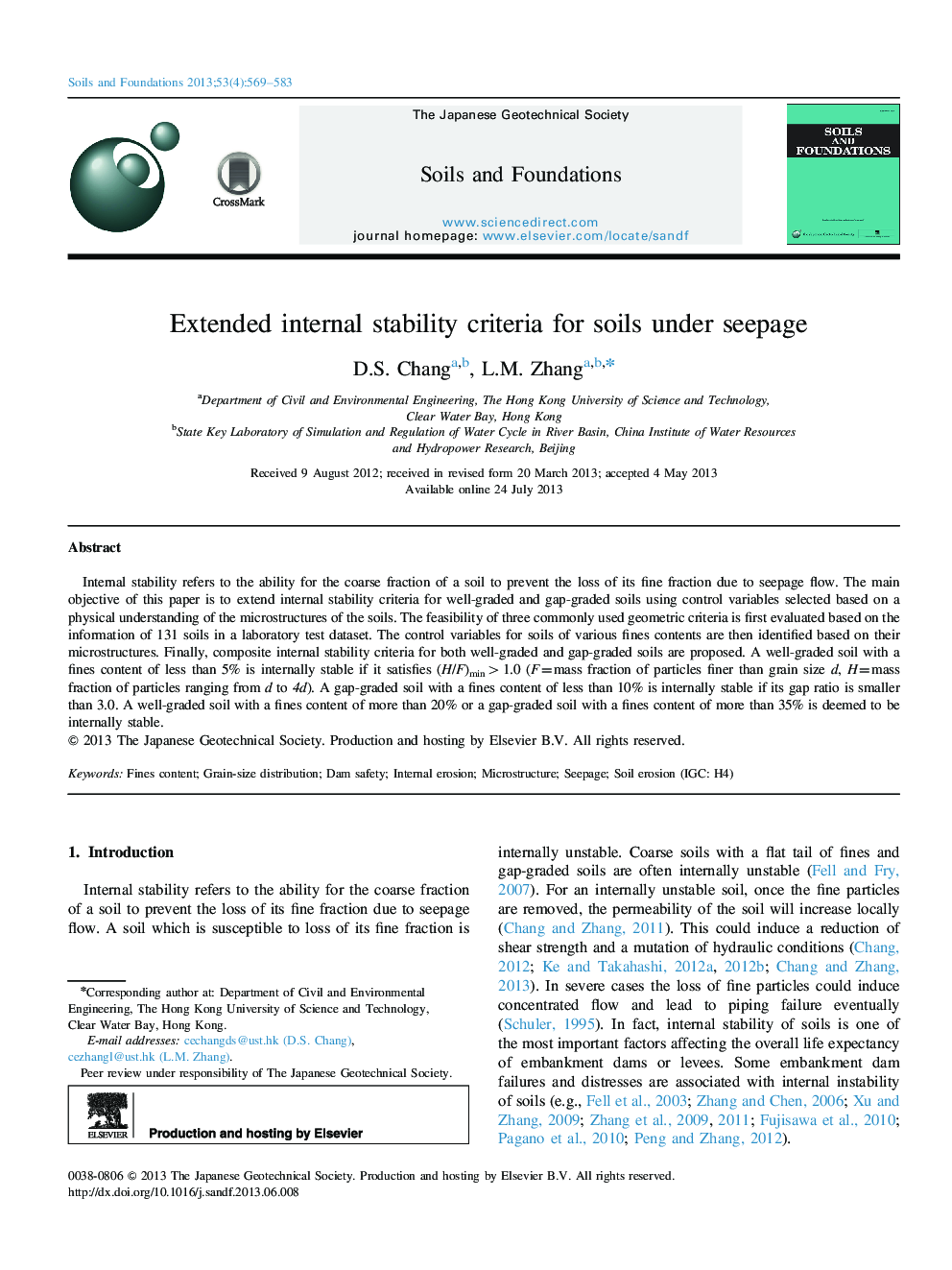| Article ID | Journal | Published Year | Pages | File Type |
|---|---|---|---|---|
| 307358 | Soils and Foundations | 2013 | 15 Pages |
Internal stability refers to the ability for the coarse fraction of a soil to prevent the loss of its fine fraction due to seepage flow. The main objective of this paper is to extend internal stability criteria for well-graded and gap-graded soils using control variables selected based on a physical understanding of the microstructures of the soils. The feasibility of three commonly used geometric criteria is first evaluated based on the information of 131 soils in a laboratory test dataset. The control variables for soils of various fines contents are then identified based on their microstructures. Finally, composite internal stability criteria for both well-graded and gap-graded soils are proposed. A well-graded soil with a fines content of less than 5% is internally stable if it satisfies (H/F)min>1.0 (F=mass fraction of particles finer than grain size d, H=mass fraction of particles ranging from d to 4d). A gap-graded soil with a fines content of less than 10% is internally stable if its gap ratio is smaller than 3.0. A well-graded soil with a fines content of more than 20% or a gap-graded soil with a fines content of more than 35% is deemed to be internally stable.
